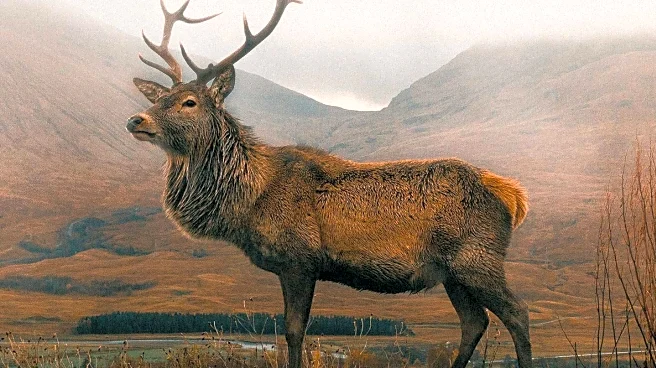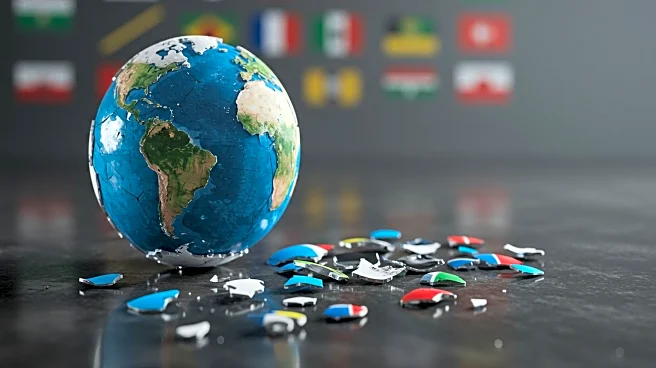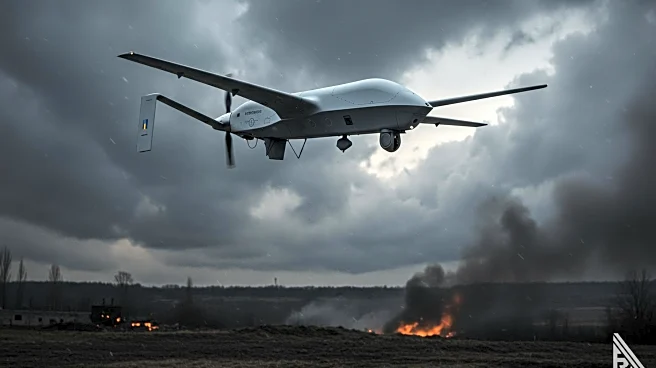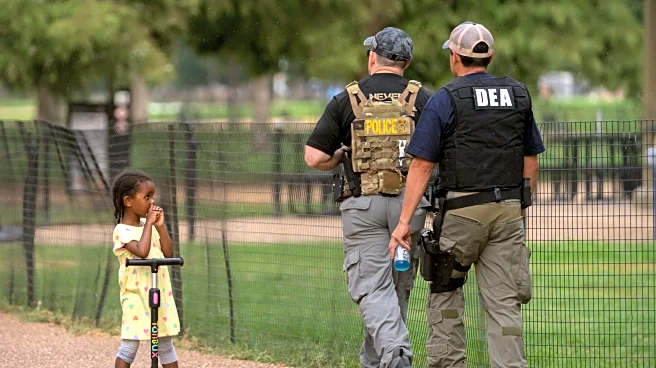What's Happening?
Kseniya Alexandrova, a former Miss Universe contestant and Vice-Miss Russia 2017, tragically died following a car accident involving an elk in Tver Oblast, Russia. The incident occurred on July 5 when an elk leaped into the road and collided with the Porsche Panamera she was traveling in with her husband. The elk smashed through the windshield, causing severe brain injuries to Alexandrova, who was in the passenger seat. Despite being in a coma for over a month, she succumbed to her injuries on August 15. Her husband survived the accident, but described the traumatic event, noting the elk's legs shattered the front of Alexandrova's skull. The couple had recently married four months prior to the accident.
Why It's Important?
The tragic accident highlights the dangers posed by wildlife on roads, which can lead to severe accidents and fatalities. Such incidents underscore the need for improved road safety measures in areas prone to wildlife crossings. The loss of Kseniya Alexandrova, a public figure, brings attention to the broader issue of road safety and the unpredictable nature of wildlife encounters. It also serves as a reminder of the fragility of life and the impact of sudden accidents on families and communities. The event may prompt discussions on implementing better safety protocols and infrastructure to prevent similar occurrences.
What's Next?
In the wake of this accident, there may be increased advocacy for road safety measures in regions with high wildlife activity. Authorities could consider installing warning signs, wildlife crossings, or barriers to reduce the risk of such accidents. Additionally, the modeling and pageant communities may come together to honor Alexandrova's memory and raise awareness about road safety. Her tragic death could lead to initiatives aimed at educating drivers about the risks of wildlife on roads and how to respond in such situations.
Beyond the Headlines
The accident raises ethical questions about human encroachment on wildlife habitats and the resulting conflicts. As urban areas expand, wildlife often finds itself navigating human environments, leading to dangerous interactions. This incident may spark discussions on balancing development with conservation efforts to protect both human and animal lives. Long-term, it could influence policies on land use and wildlife management, encouraging sustainable practices that minimize such tragic encounters.












